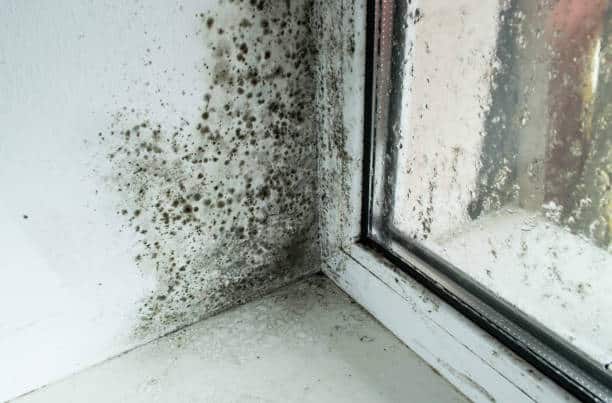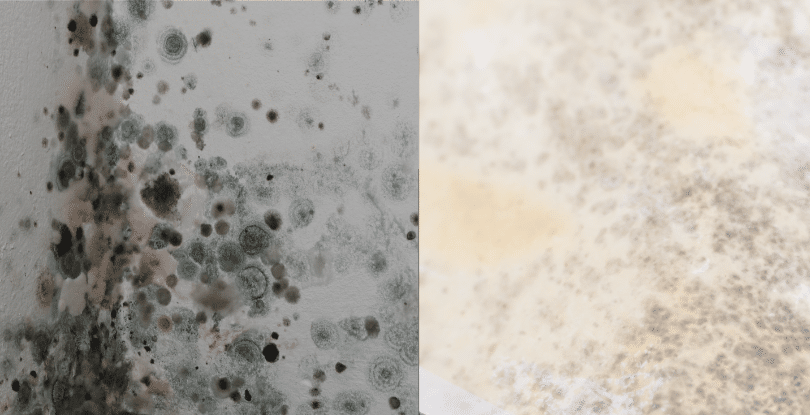How to Prevent Mold Growth in Your Home
Mold is an everyday hazard that can become a serious health and home issue if it’s not addressed. Fortunately, there are a variety of ways to stop mold before it starts by controlling moisture and improving ventilation, and keeping the entire home drier. These simple tips will get you started in creating a healthy home.
Controlling Moisture Levels:
The most important environmental factor that encourages mold growth is moisture, so controlling moisture is the single most important way to reduce your risk of mold growth inside your home. Here are some tips for controlling moisture in your home:
- Fix Leaks Promptly: Check your home regularly for leaks in pipes, roofing, windows and doors. Repair leaks promptly to keep water from seeping into walls, ceilings or floors, giving mold a chance to grow.
- Regularly Check Humidity: Keep humidity levels between 30–60 per cent inside so mold cannot thrive. Use a hydrometer to check humidity, and consider buying a dehumidifier if humidity is consistently above 60 per cent, especially in basements, bathrooms and other high-moisture areas.
- Ventilate Moisture-Prone Areas: Ventilate areas of your home that are prone to moisture like bathrooms, kitchens and laundry rooms to prevent moisture build-up. Use your exhaust fan or open windows when cooking, showering or doing laundry to let the moisture escape.
- Use Air Conditioners: Seasonal humid weather can introduce moisture into homes due to the heating of moist air and its entry from outside. To take advantage of their dehumidification capability, use air conditioners in your home during high humidity periods.
- Insulate Pipes: Insulate cold water pipes to prevent condensation and leaks – as well as to prevent pipes freezing in cold weather.
Improving Ventilation:
Good ventilation will ensure that stale air is always pushed out and replaced by a fresh supply of new air. This in turn will prevent the growth of mold, which requires moisture to thrive. While good ventilation is important in bathrooms and kitchens, it is even more critical in flat-roofed houses such as the one belonging to Laura Baldwin in St Austell, Cornwall, where mold has caused her a great deal of worry and expense. Laura now understands the importance of air flow, an issue that often goes unnoticed by homeowners suffering from damp issues. Here are some ways to improve the ventilation at your home:
- Installing exhaust fans in bathrooms, kitchens, and other high-moisture areas will help remove humid air and reduce condensation, provided they exhaust to the outdoors and not into the attic or crawl space.
- Install Ceiling Fans: Ceiling fans can circulate air through your structure, aiding ventilation. Use ceiling fans alongside open windows or doors to allow air to circulate and prevent stagnant air from developing, which can set the stage for mold.
- Open your windows and doors: As much as the weather permits, when you’re home, open your windows and doors (in succession and in opposite directions) so that the interior air can be refreshed. A properly ventilated home will also reduce the possibility of mold and mildew growth.
- Installing Attic/Roof Vents: Proper attic and roof vents will keep the attic dry. Excess attic moisture causes molds to grow, which can damage the roof. Keep your attic vents free from debris and consider adding more vents for better airflow.
- Look into a Whole-House Ventilation System: Whole-house ventilation systems allow for steady fresh air ventilation and avoid energy loss. These systems exchange stale air indoors with fresh air outdoors and can also act as dehumidifiers. Common systems include heat recovery ventilators (HRV) or energy recovery ventilators (ERV).
Implementing Preventive Measures:
These preventive measures along with moisture control and ventilation will minimize the risk of mold in your home. Preventive measures include:
- Mold-Resistant Materials: When building or renovating your home, install mold-resistant materials, like mold-resistant drywall, paint and insulation in moist areas of your home including attics, crawlspaces and basements. These building materials are manufactured with mold-inhibitors and can help control mold growth in the future.
- Keep Gutters Clean and Clear: Blocked gutters pushing water towards your house and the foundation can lead to water damage and moisture intrusion, wet basements, and even mold growth. Regularly clean out your gutters and ensure that downspouts shuttle water away from the foundation so it does not stand near your home.
- Inspect And Maintain Roof: Inspect your roof for damage or leaks at least once a year. Check for missing shingles, cracked flashing, damaged vents or other items that are posing a risk to your attic space.
- Caulk Cracks and Seams: Caulk cracks and seams in walls, windows, doors and foundations to prevent infiltration of water and outflow of air. Caulk seams around doors and windows and use weatherstripping to seal gaps, and use a waterproof sealant to seal cracks in walls or foundations.
- Clean and Ventilate Appliances: Appliances – such as refrigerators, washing machines and dishwashers – can create humidity by producing steam. If not ventilated, mold will grow. Date and maintain appliances and regularly ventilate them to keep humidity out.
Controlling moisture levels, improving ventilation and taking preventive measures can help owners to prevent mold growth in homes. Homeowners should follow the tips and strategies outlined above to keep a healthy indoor environment with a decreased risk of mold problems. In case of any moisture issues, swift actions should be taken to resolve them. Proper ventilation should be provided throughout the house and keep your home safe from mold growth with preventive measures. With preventive measures, mold growth can be prevented in the house and homeowners can enjoy a healthy home without any mold issues.
Do You Have Mold Issues? If You Think You Do, Call Us Toll Free, 1-855-947-6167 – For a Free, No Obligation Quote by a Professional Mold Remediator Near You!




